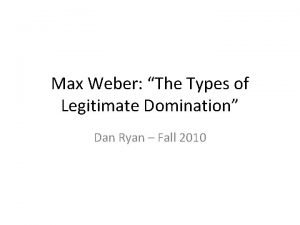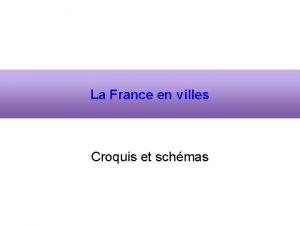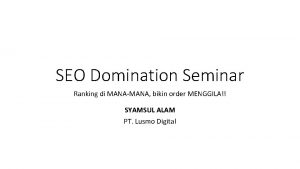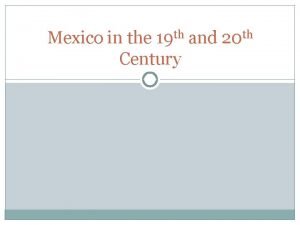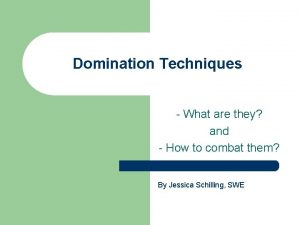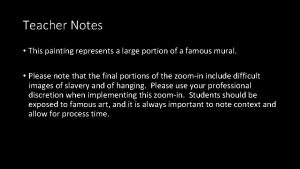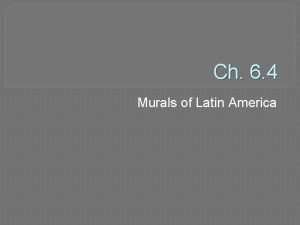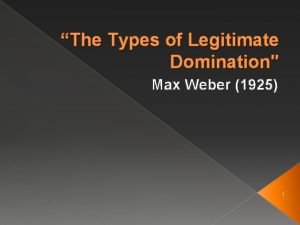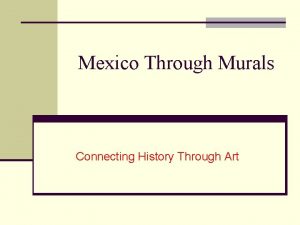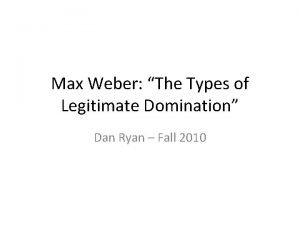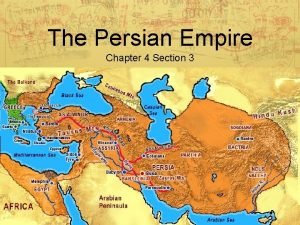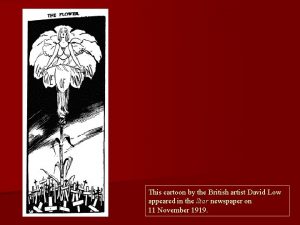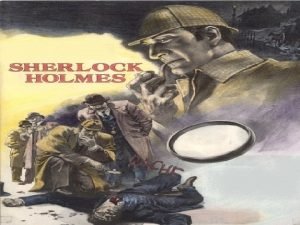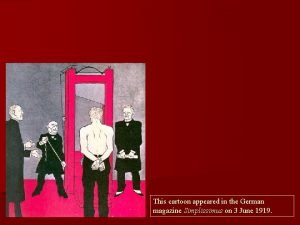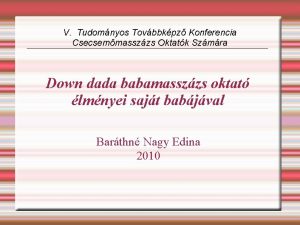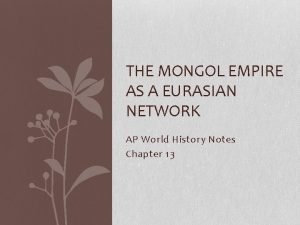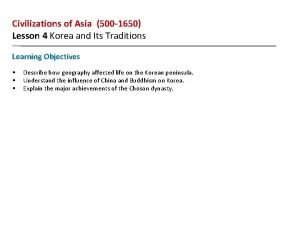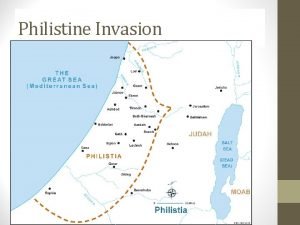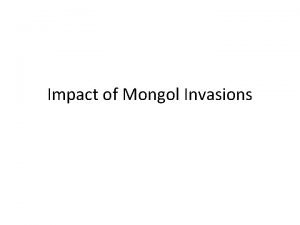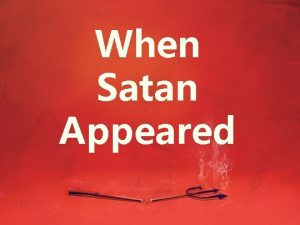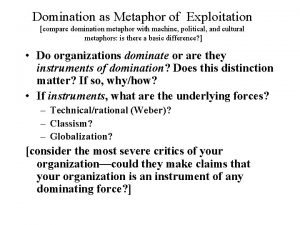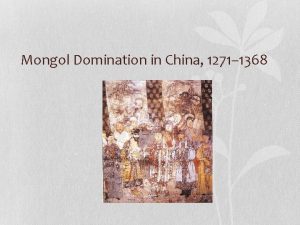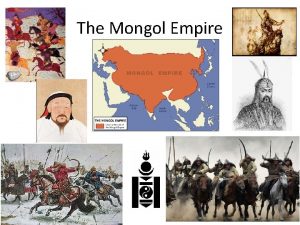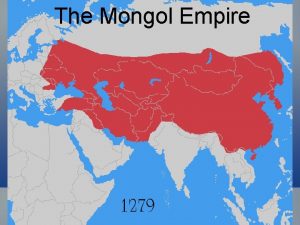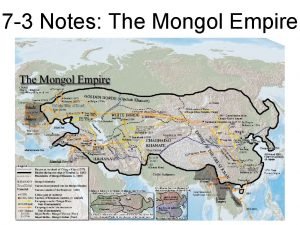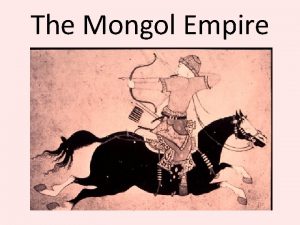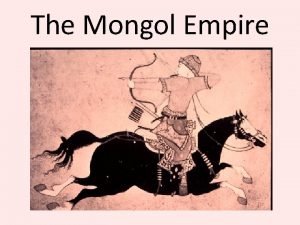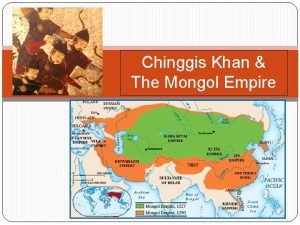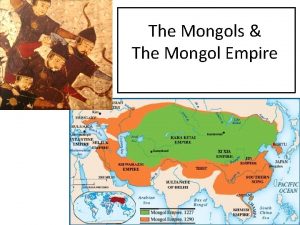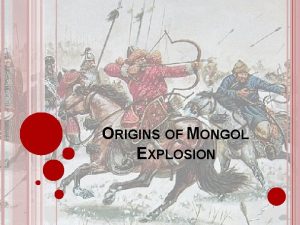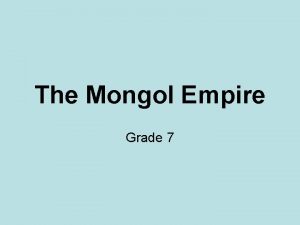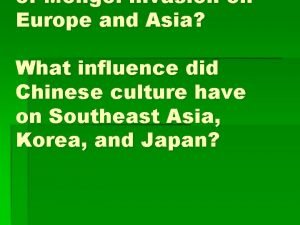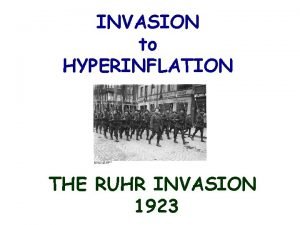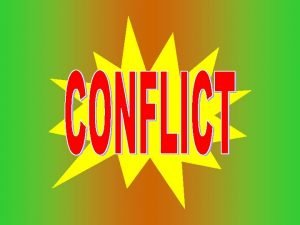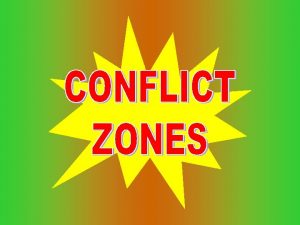MONGOL INVASION DOMINATION MONGOL INVASION DOMINATION Invasion Appeared





















- Slides: 21

MONGOL INVASION & DOMINATION

MONGOL INVASION & DOMINATION Invasion Ø Appeared suddenly in 1223, attacked in south then disappeared Ø Reappeared in 1237, attacking Riazan from north Ø Sacked Kiev in 1240 Ø 1237 -1242: Under Batu Khan, ravaged all Russian lands

MONGOL INVASION & DOMINATION Who were the Mongols? Ø Mostly Tatars from Central Asia Ø Consolidate empire & expanded under Chingis Khan Ø Sacked Kiev in 1240 Ø 1237 -1242: Under Batu Khan, ravaged all Russian lands

Batu Khan – AKA Tsar Batu – grandson of Ghengis Khan - Ruler of the Golden Horde (Western Asia & European branches of the Mongol Empire) - - - 1235 He was given an army of 135, 000 and told to forge a Mongol Empire in the West. In 1237 Batu Khan made it to Vladimir (city) and demanded the allegiance of then Grand Prince Yuri II. He refused. Batu Khan totally annihilated Ryazan, Vladimir, Kolomna and Moscow. Batu Khan burned all of the villages down – killed the Royal Family by burning the city around them. Batu Khan on Kievan Throne

Yuri II escaped to muster an army – his army was crushed by the Mongols on the Sit River. After the death of the entire Royal Family and the Grand Prince, Batu Khan divided his army into 7 smaller units and ordered them to destroy Rus. What happened next was a lot of ‘sacking’ as depicted by artwork from the era.

Sacking Rayzan – Not a single male was left breathing.

Sacking of Kiev – Bow or die – Majority of population is subjugated to the Mongol Empire.

Sacking of Kozelsk – Burnt to the ground

Sacking of Suzdal – Burnt to the ground

Sacking of Vladimir – Completely destroyed

In total, Batu Khan’s army completely destroyed and/or subjugated 14 Kievan Cities in a six month span: Rostov, Uglich, Yaroslav, Kostroma, Kashin, Ksnyatin, Gorodets, Halych, Pereslav, Yuriev, Dmitrov, Volokolamsk, Tver and Torzhok Only three major Kievan Cities avoided being destroyed: Smolensk, Novgorod and Pskov.

MONGOL INVASION & DOMINATION Russia under Mongol Rule Ø Mongol overlordship § Russian princes invested by Khan, paid tribute Ø Appanage period § Individual territorial rule Ø Rise to prominence of: § Galicia & Volynia (southeast) § Rostov, Suzdal, Vladimir (northeast) § Novgorod (north)

MONGOL INVASION & DOMINATION Russia under Mongol Rule Ø Population shift § moved west & northeast § linguistic/ethnic differentiation • Russian • Ukrainian • Belorussian

MONGOL INVASION & DOMINATION Russia under Mongol Rule Ø Internal division & weakness Ø External aggression & conquest § west & southwest fell to Lithuanians, then Poles § north subject to German (Teutonic), Swedish, Norwegian, Lithuanian attacks Ø Relative isolation & loss of international importance

MONGOL INVASION & DOMINATION Social Structure Ø Continuity & change § Princes § Clergy & Boyars: now with votchina § Freeservants (liudi) § Traders, merchants, artisans § Peasants § Slaves (kholopy)

MONGOL INVASION & DOMINATION Culture Ø Mongols interfered little with Russian life Ø But many consider it dark period § education/literacy declined § decline of towns meant urban culture deteriorated § poverty & political disunity Ø Some advancements & achievements occurred despite difficulties

MONGOL INVASION & DOMINATION Culture Ø Literature § Written works diminished § Oral tradition continued, but not on same level as Kievan

MONGOL INVASION & DOMINATION Culture Ø Art § Icon painting flourished & developed • Andrei Rublev (@1370 -1430) Archangel Michael - Rublev The Trinity - Rublev The Redeemer - Rublev

MONGOL INVASION & DOMINATION Culture Ø Art § Icon painting flourished & developed • Andrei Rublev (@1370 -1430) • Theophanes (late 14 th – early 15 th c. ) Our Lady of the Don - Theophanes The Dormition - Theophanes

MONGOL INVASION & DOMINATION Culture Ø Art § Icon painting flourished & developed • Andrei Rublev (c. 1370 -1430) • Theophanes (late 14 th – early 15 th c. ) • Dionysius (c. 1440 -1502) The Crucifixion - Dionysius John the Baptist - Dionysius

MONGOL INVASION & DOMINATION Culture Ø Architecture § Considered one of glories of period § Most structures made of wood
 The types of legitimate domination
The types of legitimate domination La domination macrocéphalique de paris
La domination macrocéphalique de paris Pakar seo syamsul alam
Pakar seo syamsul alam Colonial domination diego rivera
Colonial domination diego rivera 8 methods of tax attorney domination - indorecipe
8 methods of tax attorney domination - indorecipe Domination techniques
Domination techniques Colonial domination diego rivera
Colonial domination diego rivera Colonial domination diego rivera
Colonial domination diego rivera Traditional legitimacy
Traditional legitimacy Colonial domination diego rivera
Colonial domination diego rivera Traditional legitimacy
Traditional legitimacy Interviewer domination
Interviewer domination The types of legitimate domination
The types of legitimate domination Chapter 4 section 3 the persian empire
Chapter 4 section 3 the persian empire Cartoon by david low 1933
Cartoon by david low 1933 For the grace of god that bringeth salvation
For the grace of god that bringeth salvation Description of sherlock holmes appearance
Description of sherlock holmes appearance Simplicissimus cartoon june 1919 analysis
Simplicissimus cartoon june 1919 analysis Mongols vs vikings
Mongols vs vikings Mongol redő
Mongol redő The mongol empire as a eurasian network
The mongol empire as a eurasian network How did kublai khan organize mongol rule in china
How did kublai khan organize mongol rule in china
